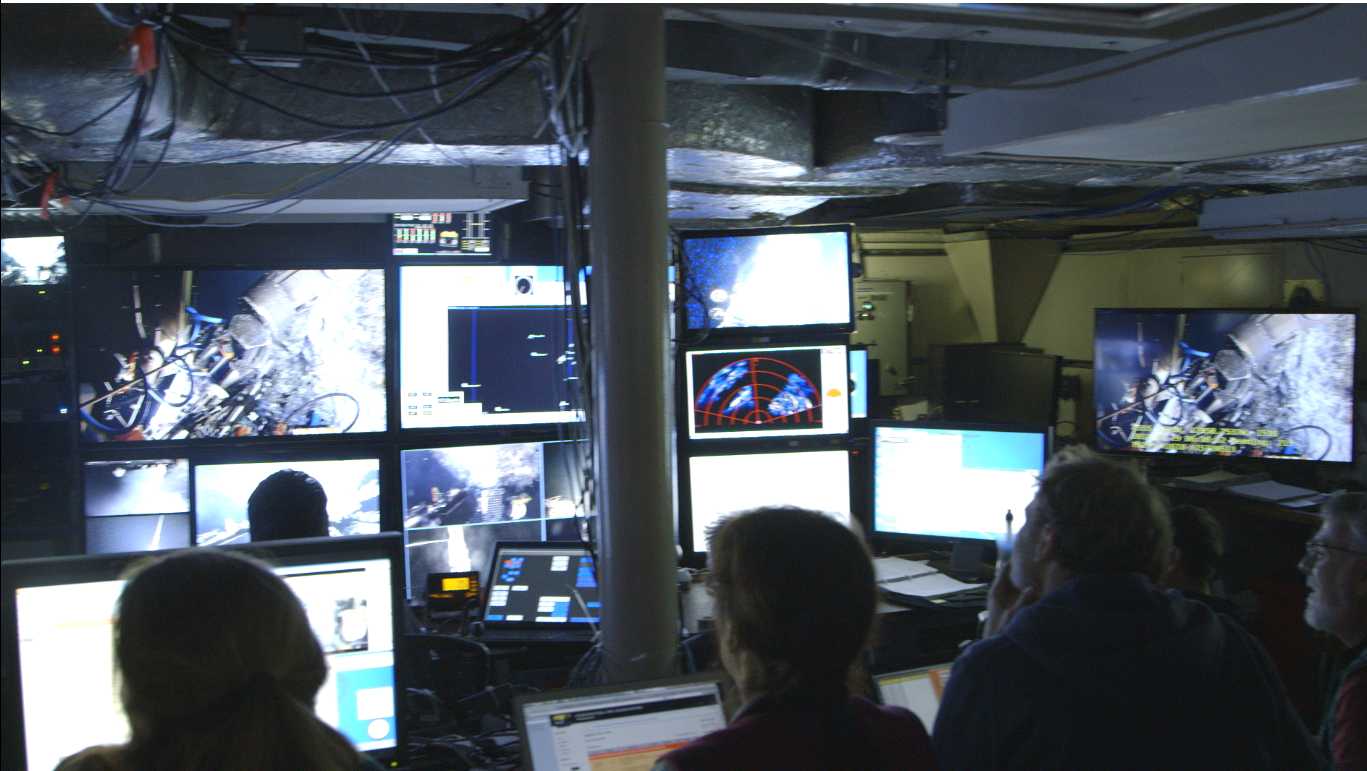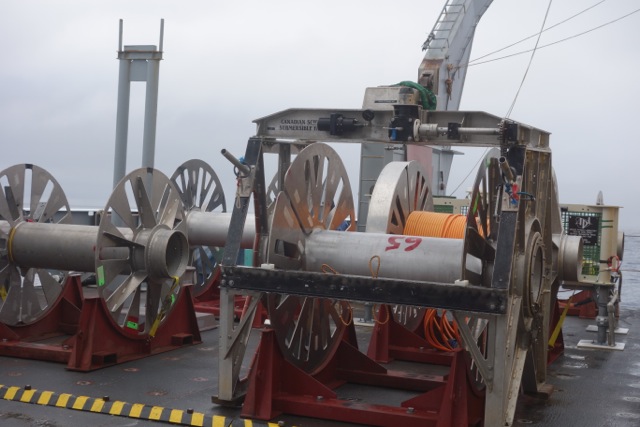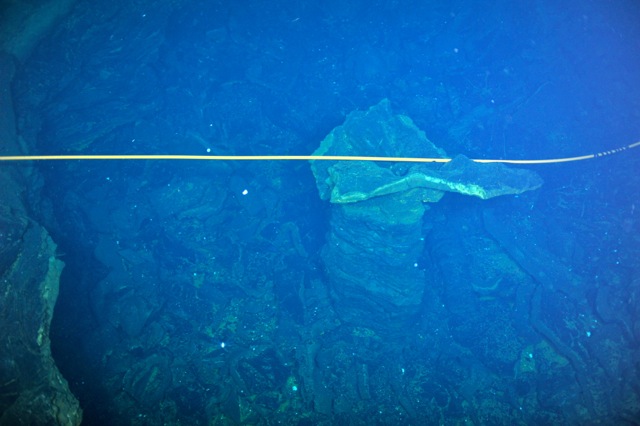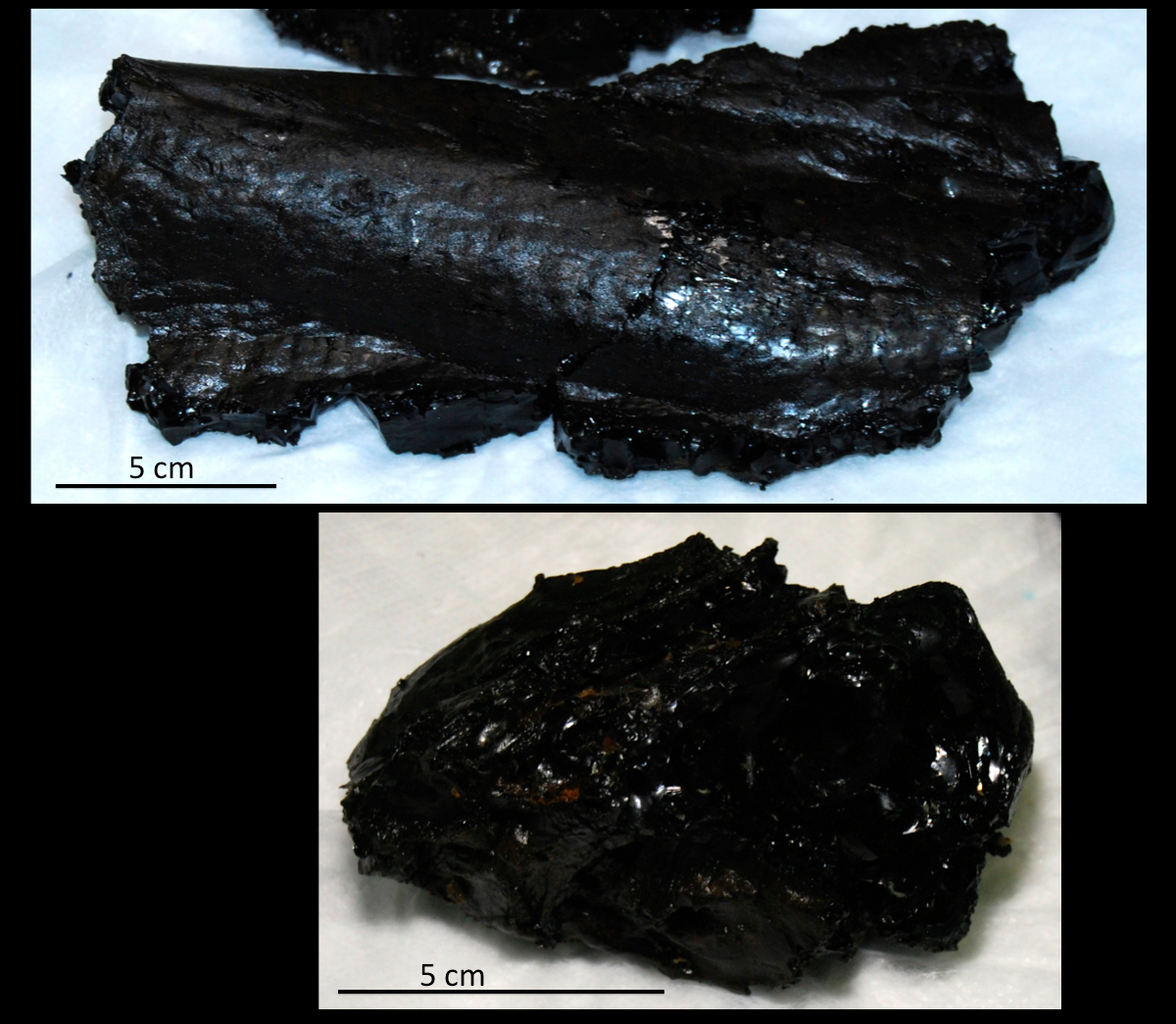Image Archive





























Montgomery Taylor created a portion of a laboratory exercise as her student project.

J. Ryan Rembert's project is developing a web application to show the ROV dives and associated metadata.

ROPOS was sent down to retrieve a seismometer at the end of VISIONS '13 Leg 3 Photo credit: NSF-OOI/UW/CSSF

Empty ROCLS spools on Thompson fantail at end of VISIONS '13, Leg 3, are emblematic of the cable-laying work accomplished. Photo by Nancy Penrose

cablelaying

Fredrik Ryden (holding Neruda poetry book) and Thompson Captain Russ Devaney, VISIONS '13, Leg 3 Poetry Night

Ryan Cox, performs for the VISIONS '13, Leg 3 Poetry Night. Photo by Ben Fundis

Left to right: Julie Nelson, Montgomery Taylor, and J. Ryan Rembert, VISIONS '13 Leg 3 Poetry night. Photo by Ben Fundis

Brendan Philip, VISIONS '13 Leg 3 Poetry Night, gets a laugh from Brian Clampitt while reading his poem. Photo by Ben Fundis

Ship's crew member, Dana Africa, reads a shaggy dog story on Poetry Night, Leg 3, VISIONS '13. Photo by Ben Fundis

Ed McNichol, VISIONS 13, Leg 3 Poetry Night, tells the girl, the boy, and the pig story. Photo by Ben Fundis

John Delaney Leg 3 Poetry NIght, VISIONS '13. Photo by Ben Fundis

r1603_00042_med

studentupdate_thumb

thectd_thumb

keiths_thumb

ROPOS Control Room VISIONS '13, Leg 3 Photo by Ryan Cox

Upon leaving Axial Seamount, only one cable reel remains on deck. Leg 3 Visions 13. Photo by Mary Miller.

Cable draped on pillar at Axial Seamount on leg 3, Visions 13. Photo credit: NSF-OOI/UW/CSSF

Giora Proskurowski planning a cable route on Axial Seamount during leg 3 during Visions 13.

Samples of fresh basalt were collected from Axial Seamount's caldera floor. When fresh, the outer surface of the rock is glassy due to the very rapid cooling and crystallization that occurs when the hot lava comes in contact with the 2oC seawater. This glass - known as obsidian - is very sharp and crumbles easily. (Photos by Leslie Sautter)

Iron-rich basalts quickly oxidize in the O2-rich atmosphere once on deck. (Photos by Leslie Sautter)

Brendan blog photo

Sunset Photo by Fredrik Ryden

ROPOS Control Room on R/V Thompson, VISIONS '13 Photo by Fredrik Ryden

ROPOS collects vent chimney sample

Deep Sea Skate sketch, drawn by Montgomery Taylor, a College of Charleston undergraduate student who participated on Leg 3 of VISIONS '13.

The thermistor array will be deployed at the base of the hydrothermal vent Mushroom, on the lower right side of this image on top of the yellow incubators.
- Anemone
- Animal
- Arthropod
- ASHES
- Axial
- Axial Base
- Axial Biology
- Axial Caldera
- Bacteria
- Basalt Lava
- BEP
- Biofouling
- biolgoy
- Biology
- Camds
- Camera
- Camhd
- Central Caldera
- Ciliates
- Cnidaria
- Coastal Biology
- Crab
- Deep Profiler Mooring
- Dive Highlights
- Eastern Caldera
- Echinoderms
- Endurance Array
- Engineering Team
- ENLIGHTEN 10
- Exploratorium
- Fish
- Geology
- HD Camera
- HPIES
- Hydrate Ridge
- Hydrates
- Hydrophone
- Hydrothermal Vents
- Illustration
- Inshore 80 Meters
- Instrument
- International District
- J-BOX
- Jason
- Jellyfish
- Junction Box
- K12
- Lava
- Mollusk
- Moorings
- Nodes
- Nudibranch
- Octopus
- OOI
- Oregon Offshore
- Oregon Offshore 600 m
- Oregon Shelf
- Oregon Slope Base
- People
- PN1B
- PN1D
- Polychaetes
- PPSDN
- Primary Node
- RASFL
- ROCLS
- ROPOS
- ROPOS Dives
- ROV Team
- RV Revelle
- RV Sikuliaq
- RV Thompson
- Salp
- Sample
- SC13
- Science Team
- Sea Cucumber
- Sea Star
- Sea Urchin
- Seafloor
- Seismometer
- Sensors
- Shallow Profiler Mooring
- Shark
- Shipboard
- Shore Station
- Slope Base
- Smoker
- Soft Coral
- Southern Hydrate Ridge
- Sponge
- Squid
- Students
- Students & Guest Participants
- Tmpsf
- Tubeworms
- VISIONS 11 Leg 1
- VISIONS 11 Leg 2
- VISIONS 11 Viewers
- VISIONS 13
- VISIONS 14
- VISIONS 15
- VISIONS 16
- VISIONS 17
- VISIONS 18
- VISIONS 20
- VISIONS 22
- VISIONS 23
- Visualization
